The Mill City Times Interview: Lisa Keitel, Mississippi National River and Recreation Area National Park Volunteer and Minnesota Master Naturalist
 Thursday, October 15, 2020 at 3:06PM |
Thursday, October 15, 2020 at 3:06PM |  Becky Fillinger |
Becky Fillinger | Article by Becky Fillinger
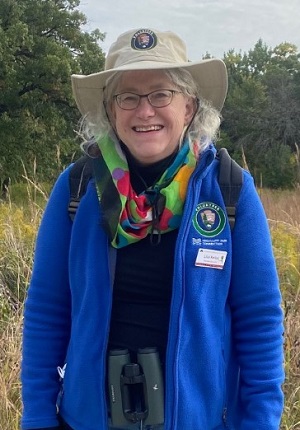 Lisa KeitelWe met up with Lisa Keitel at her Listening Program at Coldwater Spring. She shares with us the history and programs at this very beautiful, accessible local park.
Lisa KeitelWe met up with Lisa Keitel at her Listening Program at Coldwater Spring. She shares with us the history and programs at this very beautiful, accessible local park.
Q: Can you tell us the history of Coldwater Spring?
This area at the confluence of the Mississippi and Minnesota Rivers has been a significant and important place for eons. That is one of the reasons it is special to me. It is a place I visit often. It is part of the Mississippi National River and Recreation Area National Park. MNRRA is a national park running 72 miles along the Mississippi River corridor.
Here is further information from the MNRRA website:
Unlike most other national parks, the Mississippi National River and Recreation Area is a "partnership" park. The park owns only 67 acres of the 54,000 acres within our borders. The rest is composed of city parks, regional parks, a state park, a national wildlife refuge, state scientific and natural areas, along with private businesses and homes. We work in partnership with those other units of government to bring additional services to both them and visitors and to preserve and protect the natural and cultural history of this great river.
This area served as an important crossroads for Native Americans and traders using both the Mississippi and Minnesota Rivers for commerce and travel.
During the construction of Fort Snelling U.S. soldiers camped at Coldwater Spring, making it the first American settlement in Minnesota. By 1825, construction of the fort had been completed and soldiers had moved from Coldwater into the fort. The area around the spring, however, continued to attract traders, Native Americans, and a small village developed that serviced the trade at the site.
The spring also continued to provide water to the new fort and the later Upper Post. The fort initially relied on horse-drawn water wagons and eventually railcars to deliver water from Coldwater Spring up until the 1870s. By 1879, the fort was expanded under Secretary of War, Alexander Ramsey. The fort's expansion demanded a more efficient water supply system and, in 1880, the Army established a formal waterworks at the spring. Coldwater served as the water source for the Army until the 1920s when the Army turned to the City of Saint Paul to supply water for the fort. The property was last home to the Bureau of Mines: Twin Cities Research Center. The buildings were constructed primarily during the late 1950's through the early 1960's.The Research Center developed significant mining safety equipment, mining technologies and mineral extraction processes used worldwide. The labs there also analyzed the composition of some of the moon rocks brought to Earth by the Apollo moonshot missions. Federal funding for the Bureau of Mines was permanently eliminated in 1996; by 1997 the buildings were vacated and gradually fell into disrepair. They remained vacant until their demolition in 2011.
Coldwater Spring was added to the Mississippi National River and Recreation Area in January 2010, with the goal of restoring the landscape to an oak savanna/prairie complex. An extensive renovation, which included the removal of twelve buildings and the restoration and seeding of twelve acres of prairie and one acre of wetlands, began in early 2011 and was largely completed by August 31, 2012. During the course of the restoration more than 1,000 trees, shrubs, grasses and wildflowers were planted on the property. The restoration work, however, will continue for many years.
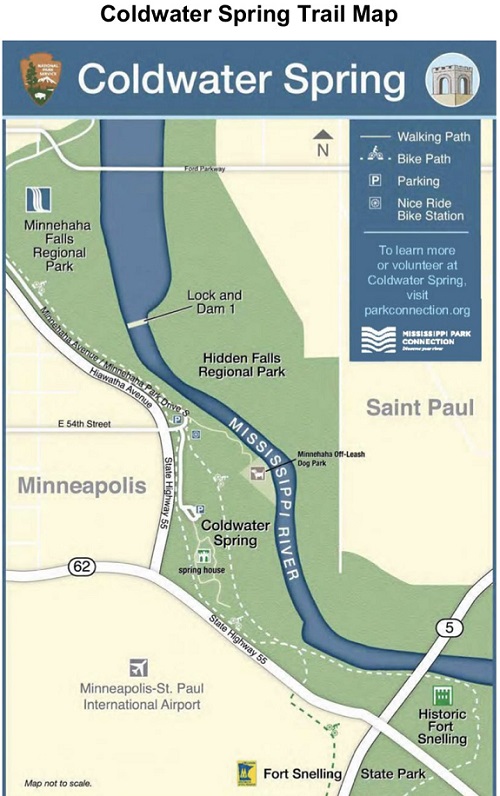
Q: You lead a listening tour at Coldwater Spring. What is the goal of that program?
Creation of the Listen to Coldwater program was a way to get folks out to the park, in small groups, safely, to explore nature in a new way. I am a birder, and leading bird walks during COVID-19 was, and is, not safe. A group, even a small group, walking around together tends to clump close together. And if I am trying to point out a bird, it is most helpful if you can stand next to me and get the same field of view. I thought about how to be outside safely. Sitting socially distant and paying attention to the birds that are in the area would work. In Listening to Coldwater, we talk about softening your senses and broadening your vision to full field of view. We tune into our hearing, acknowledge the loudest sounds, and set that aside. We listen for more - the softest sound or the bird call that is furthest away. We sit in silence for 10 minutes and I point out the various bird calls or squirrel chatter and the direction the sound is coming from. I’ll write what we are hearing on a white board. At the end of our quiet time, I’ll talk more about the birds we heard. It’s always a little risky, we are at the mercy of the birds flying by and sometimes it is very quiet. My favorite this season was hearing and identifying the squeaky bike wheel.
Q: You're a Master Naturalist. Please tell us about this credential - how did you become one?
The Minnesota Master Naturalist program is offered through the University of Minnesota Extension. It involves 40 hours of course work – classroom training and field trips - about one of the three major biomes in the state. “Big Woods, Big Rivers” focuses on the diagonal biome from the southeast to the northwest portion of the state and the Mississippi and Minnesota Rivers. “Prairies and Potholes” focuses on the prairie lands in the west and southwest part of the state. “North Woods, Great Lakes” is just that, the northland and Lake Superior.
Volunteers work 40 hours or more each year in a variety of ways. Stewardship Projects involve activities such as invasive species removal or restoration projects.
Education/Interpretive Projects include public presentations of natural resource information, educational materials development, or leading hikes.
Citizen Science Projects have volunteers gathering data and returning it to researchers to support the research projects – such as Monarch larval monitoring, plant or animal counts, eBird, or water quality monitoring.
My volunteer hours are primarily in Education and Outreach. I love sharing what I know about birds and what I have learned about our region to all ages. Being with people as they get that spark of insight or sight of a new bird gives me great joy.
I am a volunteer with the Mississippi National River and Recreation Area. I work with the park and their nonprofit partner, Mississippi Park Connection. MPC strengthens a life-long connection between people and the Mississippi River through youth education, environmental stewardship and community engagement.
Q: What wildlife are we likely to encounter at Coldwater Spring?
Coldwater Spring is a great place for wildlife viewing. The birds are amazing. It is a consistent spot for seeing the brilliant blue Indigo Bunting in the summer. Many interesting (and hard to identify) sparrows find the restored oak savannah and open prairie a critical stopover during spring and fall migration. The hawks, Turkey Vultures and Bald Eagles are often seen soaring overhead. Deer, coyotes, and turkeys are frequent visitors.
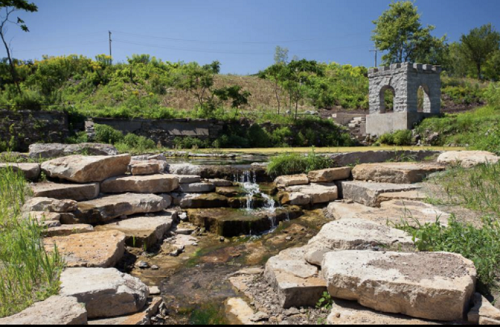
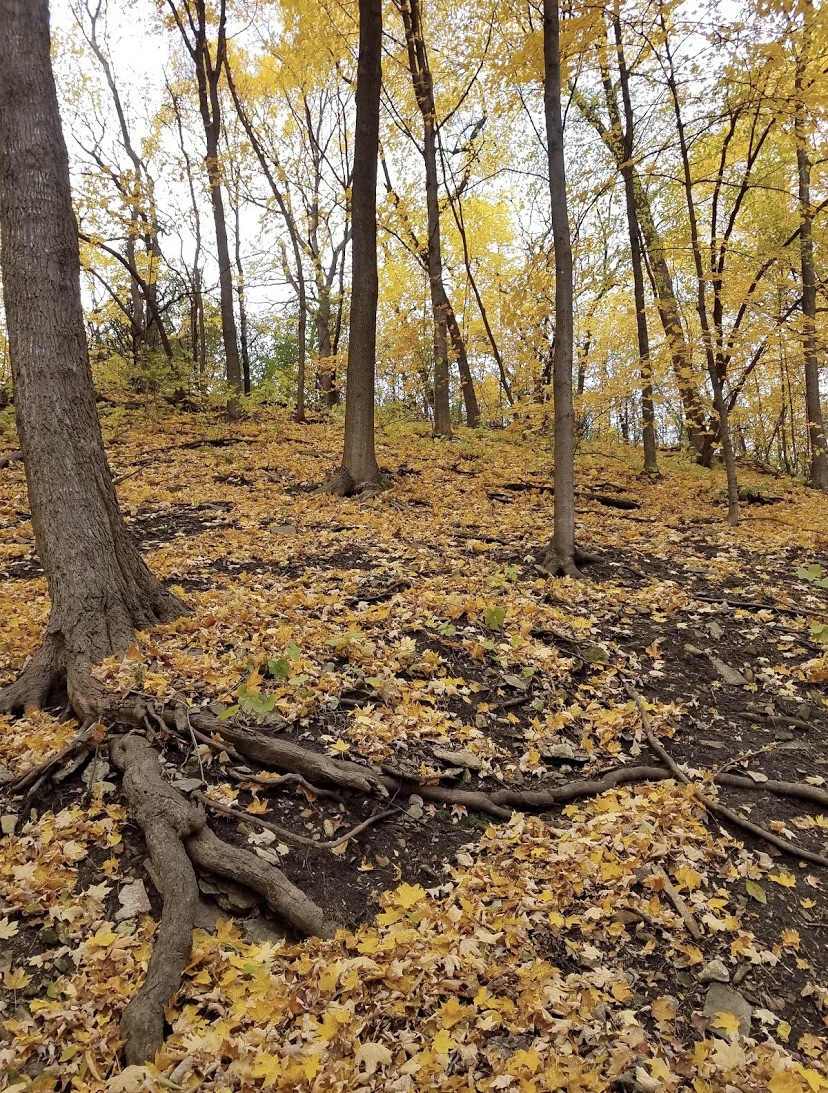
Q: Is Coldwater Spring open year-round?
Yes. Coldwater Spring is open 6am to 10pm all year. Visit it all at all times of the year! The open areas with leafless trees in the late winter makes birding a bit easier. Comparing the early spring prairie to the full-blown late summer bloom of prairie wildflowers is breathtaking. Winter gives you a chance to see what has been traveling the trails with their tracks in the snow.
Q: How can we follow what is happening at Coldwater Spring?
Check out two new announcements! I recommend you give the hiking trails a try and also help us with the bird count.
New Hiking Trail Loops at Coldwater Spring
These new trail loop descriptions from the National Park Service are practically poetic! Let them whisk you away to a serene naturescape, then whisk yourself away to Coldwater Spring to experience them in person. Explore tallgrass prairie and the historic springhouse on the Baltimore Oriole Loop, oak woodland and bluff top oak savanna restoration on the Scarlet Tanager Loop, and the Mississippi River floodplain on the Indigo Bunting Loop. For trail loop descriptions and map: https://parkconnection.org/blog/2020/10/new-hiking-trail-coldwater-spring-minnesota.
Global Big Day at Coldwater Spring
Coldwater Spring, 5601 Minnehaha Park Drive S. Saturday, October 17, 8 am – 4 pm
Help the National Park Service identify birds at Coldwater Spring using eBird, a free app that will help them collect a one-day snapshot of birding populations on a global scale. This activity is great for novices, pros and everyone in between. For information: https://parkconnection.org/events/2020/10/17/global-big-day.
- - - - - - - - - - - - - - - - -
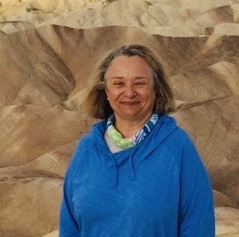 About Becky Fillinger
About Becky Fillinger
I’ve been a resident of the Mill District only since July 2019, but have visited the Guthrie, the Farmers Market, restaurants and friends in the area for many years prior to making the leap to Minneapolis. I’ve lived in many places (and climates) in the US and can testify that our cultural events, bicycle and hiking trails, parks and green spaces, museums, diverse neighborhoods and wonderful restaurants put Minnesota and Minneapolis high on my best places list. I’m a member of the Mill City Singers and look forward to our choir practices and performances.
One of my main interests is community - a very broad concept. For me it means bringing people together with common interests to form meaningful relationships. I look forward to reporting on businesses and individuals in our neighborhoods. Feel free to drop me an email at becky_fillinger@hotmail.com with your thoughts and ideas for stories.
